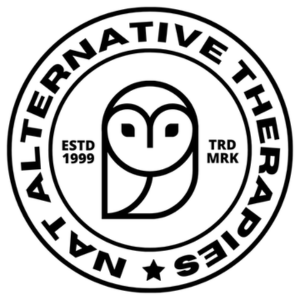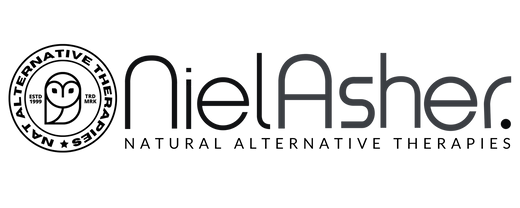Treating the Frozen Shoulder - RRE Method

The Reynolds Rehabilitation (RRE) approach to treating frozen shoulder has evolved over several years and has primarily been influenced by the pioneering work of Simeon Niel-Asher.
Adhesive capsulitis, or frozen shoulder, is an inflammatory condition of the glenohumeral (ball and socket) joint that is characterized by varying degrees of stiffness and pain. Adhesive capsulitis is somewhat of misnomer as many cases of frozen shoulder can be attributed to myofascial trigger points in muscles around the shoulder complex rather than to the glenohumeral capsule itself (Travell and Simons, 1983).
Much controversy exists regarding the diagnosis and treatment of frozen shoulder and it remains one of the more complex conditions to treat. This is partially due to the fact that the shoulder as a whole is a complicated “joint” and really comprises 4 joints whose timing and contribution to overall motion are critical to normal mechanics. Furthermore, alterations in the mechanics, both kinetics and kinematics, of the shoulder for various reasons, such as trauma, concomitant disease, age, gender, cultural background, ergonomic stressors and others, results in compensatory mechanics which can trigger their own set of symptoms and presentations. This makes diagnosis and treatment complicated and often results in faulty diagnosis and treatment.
The true causes of frozen shoulder are poorly understood and it is generally regarded as having insidious onset. There may have been minor strain or trauma, exposure to poor ergonomic situations in an occupational setting (awkward and/or static posture, forceful exertion, high rates of repetition, etc.), or even recent surgery, but sometimes there is no obvious event that precipitates the condition. Sufferers reportedly progress through three phases which can be characterized by:
- Pain and loss of motion, which lasts up to 9 months,
- Relatively mild pain but persistent loss of motion, which can last up to 9 months, and
- Recovery of range of motion over a period of 1-3 years (Reeves, 1975).
Various theories regarding a pattern of loss of motion have been proposed (Cyriax, 1978; Rundquist and Ludewig, 2004) and it has been shown that loss of internal rotation range of motion is the most common feature associated with frozen shoulder, and it was also found that internal rotation is usually more limited than abduction (raising the arm up and away from the side of the torso), which is more limited than external rotation (Rundquist and Ludewig, 2004). Whereas Davies (2006) and Travell and Simons (1983) report that frozen shoulder is caused by trigger points in shoulder complex musculature, Rundquist and Ludewig (2004) indicate that the posterior capsule and/or the inferior glenohumeral ligament are predominant contributors to the condition. It should be noted that Rundquist and Ludewig did not investigate the presence or absence of myofascial trigger points, though their study enjoyed significant scientific rigor from a kinematic analysis point-of-view. Moreover, Davies’ assertions are based on medical literature, some of which is anecdotal and some poorly controlled. It is probable that though the posterior capsule and possibly the inferior glenohumeral ligament are likely contributors to frozen shoulder, the condition is probably characterized, though not necessarily caused by, associated muscle pain and dysfunction, presenting as myofascial trigger points.
In considering the patho-mechanics of the frozen shoulder condition, one should also consider the fact that the rotator cuff muscles (supraspinatus, infraspinatus, subscapularis and teres minor) all attach to the capsule of the glenohumeral joint, in addition to the humerus itself. Therefore pain and/or dysfunction in any one of these muscles can have an effect on the tightness and pain experienced in the capsule of the glenohumeral joint, and that these structures cannot be thought of as being separate from one-another in terms of patho-mechanics, and therefore should be included in our examination as we plan treatment for this condition. Although these rotator cuff muscles do generate movement, in tasks that require significant force, they are mostly responsible for stabilization of the humerus (ball) against the glenoid (socket). The rotation of the humerus relative to the glenoid is critical to the function of the shoulder, particularly in motions greater than 90 degrees of elevation. Other muscles, such as pectoralis major, latissimus dorsi, biceps, triceps, brachialis, coracobrachialis and others are the major power generators.
The RRE approach to treating frozen shoulder has evolved over several years and has primarily been influenced by the pioneering work of Simeon Niel-Asher, but has also been influenced by several clinicians and researchers. These contributions are described below:

The RRE Method
The most common sites for adhesive capsulitis are the anterior capsule/subscapularis muscle-tendon unit, the posterior capsule, and the inferior capsule. It is important to identify the most likely location of the condition before commencing any intervention aimed at resolving the condition.
Initially, baseline measures are used to assess the level of pain the individual is experiencing and the degree to which the pain is affecting everyday life. Typically, the following measures are used:
Numeric pain rating scale (0 to 10), and
Shoulder Pain and Disability Index, or
Shoulder Rating Questionnaire.
Active range of motion
Active shoulder range of motion is measured using digital or analog goniometry as follows:
- Humero-thoracic flexion in the sagittal plane (standing),
- Humero-thoracic abduction in the coronal plane (standing),
- Humero-thoracic external rotation (in supine with the arm abducted to 45 degrees),
- Humero-thoracic internal rotation (in supine with the arm abducted to 45 degrees).
Diagnostic Categories
The diagnostic categories of frozen shoulder are based on the Niel-Asher Technique classification of frozen shoulder.
Anterior Location (subscapularis and anterior capsule):
External rotation will be most limited, which will in turn limit your ability to raise your arm to the side, and to a lesser extent, to the front. Pain, which will be associated with movement in early stages and may be a more prominent feature than limited motion, will probably be felt in the front of the shoulder and/or arm, though could also be felt in the back of the scapula (shoulder blade) area.
Posterior Location (posterior and possibly inferior capsule):
Limitation of internal rotation is most likely greater than external rotation. You will have difficulty putting your hand behind your back. You will also have difficulty reaching to the side and overhead and pain may radiate down the back/side of the upper arm.
Treatment
The treatment process is set out in the table below together with the influence or source of each technique:

About Jonathan Reynolds PT, PhD

Dr. Jonathan Reynolds is the founder of Reynolds Rehabilitation, a practice that has out-patient physical therapy clinics in Minneapolis and Eagan MN, USA and that provides rehabilitation services to a wide variety of patients with orthopaedic problems, including performing artists and industrially injured individuals. Jonathan’s main clinical focus is in the treatment of shoulder disorders including:
- Subacromial impingement
- Frozen shoulder
- Neural compression syndromes (thoracic outlet syndrome)
- Acute trauma
- Chronic pain
- Complex post-surgical dysfunction
Jonathan’s PhD in Rehabilitation Science involved research of 3-dimensional shoulder kinematics and electromyographic Exposure Variation Analysis (EVA) in the right shoulders of orchestral violinists. He and fellow researchers successfully resolved decade-long problems with the statistical analysis of EVA. Furthermore, his research indicated that violinists with subacromial impingement syndrome had successfully developed compensatory mechanics to lessen the effects imposed by playing an instrument in an ergonomically awkward position with repetitive shoulder motion.

NAT TRIGGER POINT DIPLOMA COURSE
For Manual Therapists and Bodyworkers


The Gold Standard in Continuing Education and Online Training
Massage Therapy, Sports Massage, Strength and Conditioning, Stretching, Mobilisation and Manipulation, Cranio-Sacral Therapy, IMS Dry Needling, Acupuncture, Acupressure, Trigger Point Therapy, IASTM, Resistance Training, Bowen Therapy, Vestibular Rehabilitation Therapy, Podiatry, Oncology Massage, Sports Nutrition, Traditional Chinese Medicine, Somatic Therapy, Prenatal Bodywork and Massage, Anatomy, Biomechanics, Clinical Reasoning, Pilates, and Yoga.





















